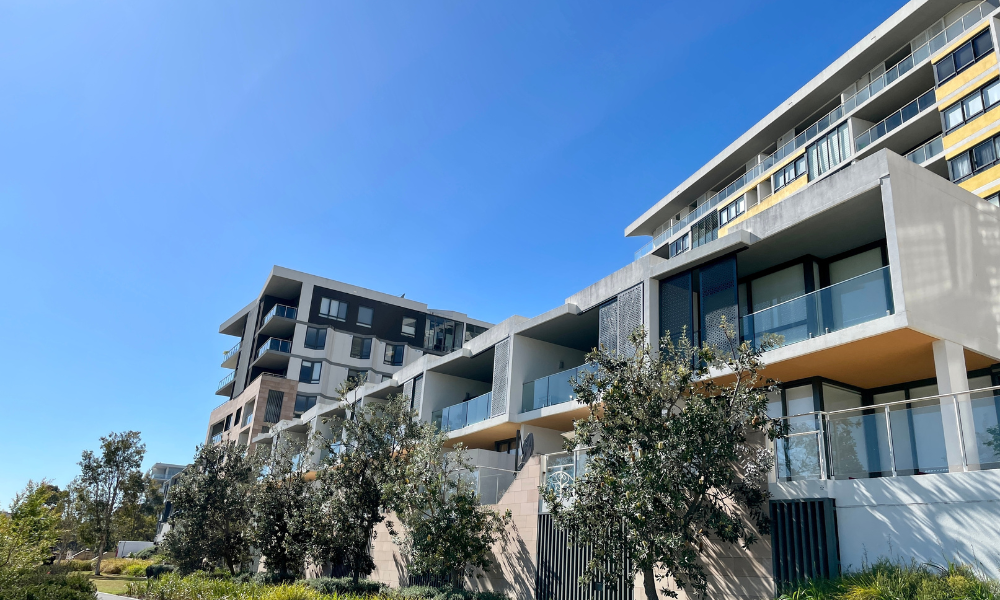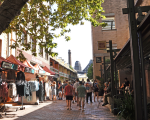Sydney housing trends in 2025 tell a story of pressure and adaptation. With the city’s population still climbing, immigration flows remaining strong, and construction unable to keep pace, locals are caught between soaring rents, limited supply, and shifting lifestyle choices. While some are turning to co-living or regional moves, others are holding onto the dream of buying a home despite high prices and intense competition.
Here’s a closer look at the current trends shaping Sydney’s housing landscape in 2025, and what they mean for renters, buyers, and the broader community.
A Rental Market Under Strain
Renters in Sydney are facing some of the toughest conditions in decades. Vacancy rates sit at around 1.5%, well below the balanced level of 2–3%. This has left tenants with little negotiating power and landlords able to raise rents more aggressively.
Data from Domain shows unit rents rose by 3.6% year on year by mid 2025, outpacing house rents, which still climbed 1.8%. With international students and young professionals returning in large numbers post pandemic, demand for apartments near transport and universities has surged.
On a broader scale, forecasts suggest that median apartment rents across Australia’s capitals could grow by as much as 24% between 2025 and 2030. For Sydney, already the most expensive rental market in the country, this signals ongoing pain for tenants.
Property Prices: Growth, But Slower
Sydney’s property prices remain among the highest in the world, with the median house price sitting above $1.2 million. However, the pace of growth has moderated compared with the boom years. Analysts forecast 3–6% growth in 2025, which still outstrips wage increases for most households.
Apartments tell a slightly different story. While prestige units in the CBD and inner suburbs hold their value, many mid market apartments are showing flatter growth. Buyers prioritising space are still favouring detached homes in suburbs with schools, parks, and transport links.
Affordability Pressures
For most Sydneysiders, affordability is the defining challenge. CoreLogic estimates that more than 40% of household income is now required to service a typical mortgage in Sydney, well above recommended thresholds. Renters face similar strain, with some inner city “affordable housing” schemes still pricing two-bedroom units at over $1,000 per week, out of reach for many families.
This pressure has fuelled a trend towards multi-generational living in suburban homes, as adult children stay longer with parents and older family members consolidate under one roof. Shared housing and co-living are also on the rise, especially for younger residents priced out of the private rental market.
Suburb Snapshots: West vs East vs North
- Western Sydney: Suburbs like Parramatta, Blacktown, and Liverpool remain magnets for families chasing relative affordability and new infrastructure projects. Improved transport links, including Metro expansions, are expected to keep these areas in demand.
- Eastern Suburbs: Areas such as Bondi and Coogee remain aspirational but increasingly unattainable. With two bedroom units renting for over $1,100 per week in Bondi Junction, many locals are moving further south to suburbs like Maroubra or into shared living arrangements.
- Northern Beaches: Lifestyle appeal continues to drive demand in suburbs like Manly and Dee Why. Prices remain high, but remote and hybrid working trends have made these coastal areas more practical for professionals who don’t need to commute daily.
Planning Reforms and Supply Shortages
Sydney’s housing shortage is largely a supply problem. Dwelling completions remain below what’s needed to meet population growth, creating a gap that fuels both price and rent rises.
The NSW Government has acknowledged the crisis and in 2025 announced sweeping planning reforms. These include:
- Streamlining development approvals for medium-density housing.
- Creating faster pathways for significant projects.
- Allowing more mixed use developments in growth corridors.
While these changes aim to unlock thousands of new homes, industry experts warn that labour shortages and high construction costs could slow progress. For many locals, relief still feels years away.
The Rise of Co-Living and Build to Rent
One of the most notable shifts in Sydney is the emergence of co-living developments. Operators such as Hmlet are expanding in suburbs including Mays Hill, Harris Park, and Petersham. These projects offer private bedrooms with shared kitchens and living spaces, targeting students, singles, and professionals looking for affordability and community.
Similarly, build to rent projects are gaining traction. Instead of selling apartments, developers construct entire complexes designed for long term rentals with professional management. This model, already popular overseas, promises greater stability for tenants and predictable income for investors.
Together, these innovations hint at a future where Sydney housing looks more diverse than the traditional ownership focused model.
Major Development Projects
Despite affordability struggles, the luxury end of the market is booming.
- Darling Harbour Revitalisation: Developers Mirvac and Mitsubishi Estate are delivering over 250 high end apartments in a $1.5 billion precinct upgrade, complete with resort style amenities.
- Hyde Metropolitan (CBD): A mixed use tower rising on Liverpool Street will combine residential apartments with hotel and retail space.
- 505 George Street: Set to become one of Sydney’s tallest residential towers, this project will add over 500 apartments to the CBD.
These developments highlight the divide in Sydney’s housing market: prestige projects continue to flourish while affordable options remain scarce.
What Locals Are Doing to Adapt
With conditions this tough, many Sydneysiders are changing the way they approach housing.
- Renters are moving further out or into share arrangements, while some negotiate longer leases to avoid repeated rent hikes.
- Buyers are downsizing expectations, looking at smaller apartments or homes in emerging suburbs with infrastructure upgrades.
- Families are considering regional relocations to Wollongong, Newcastle, or the Central Coast, where commuting is possible but housing is cheaper.
The Road Ahead for Sydney Housing
Sydney’s housing story in 2025 is one of resilience in the face of pressure. Locals are adapting to rising rents, shifting to alternative living models, and balancing lifestyle goals with financial realities. For developers and policymakers, the challenge is clear: boost supply, encourage diverse housing options, and ensure affordability doesn’t slip further out of reach.
The coming years will test how well Sydney can balance growth with liveability. If reforms succeed and new housing types take root, the city could begin easing its affordability crisis. Until then, locals will continue to navigate one of the toughest housing markets in the world; adjusting, sharing, and seeking opportunities wherever they can find them.










